
synopsis:
deutsch:
Eine protopische Landschaft mit einer homogenen Architektur. Das im Zeichen des Fortschritts und aufgrund fehlenden urbanen Wohnraums entstandene Neubaugebiet setzt mit der Zeit Alterungsspuren an, bröckelt und wirkt menschenleer. Ausstellungsbesucher nehmen unbemerkt Einfluss und gestalten so eine Metapher für die Aufhebung und Entwurzelung von Ursprung, Tradition und Identität. In der Echtzeit-Computersimulation hinterlässt jeder Besucher eine digitale Spur, die in der immer deutlicher werdenden visuellen Abnutzung der Architekturen sichtbar wird.
english:
A protopian landscape with a homogeneous architecture. The new development real estate area, created in the sign of progress and due to a lack of urban living space, begins to crumble, show signs of age and seems deserted. Exhibition visitors are influencing the visual status of the buildings. In relation to the amount of visitors during one day, both buildings deteriorate in real time. Hence, a metaphor is created for the abolition and uprooting of origin, tradition and identity.
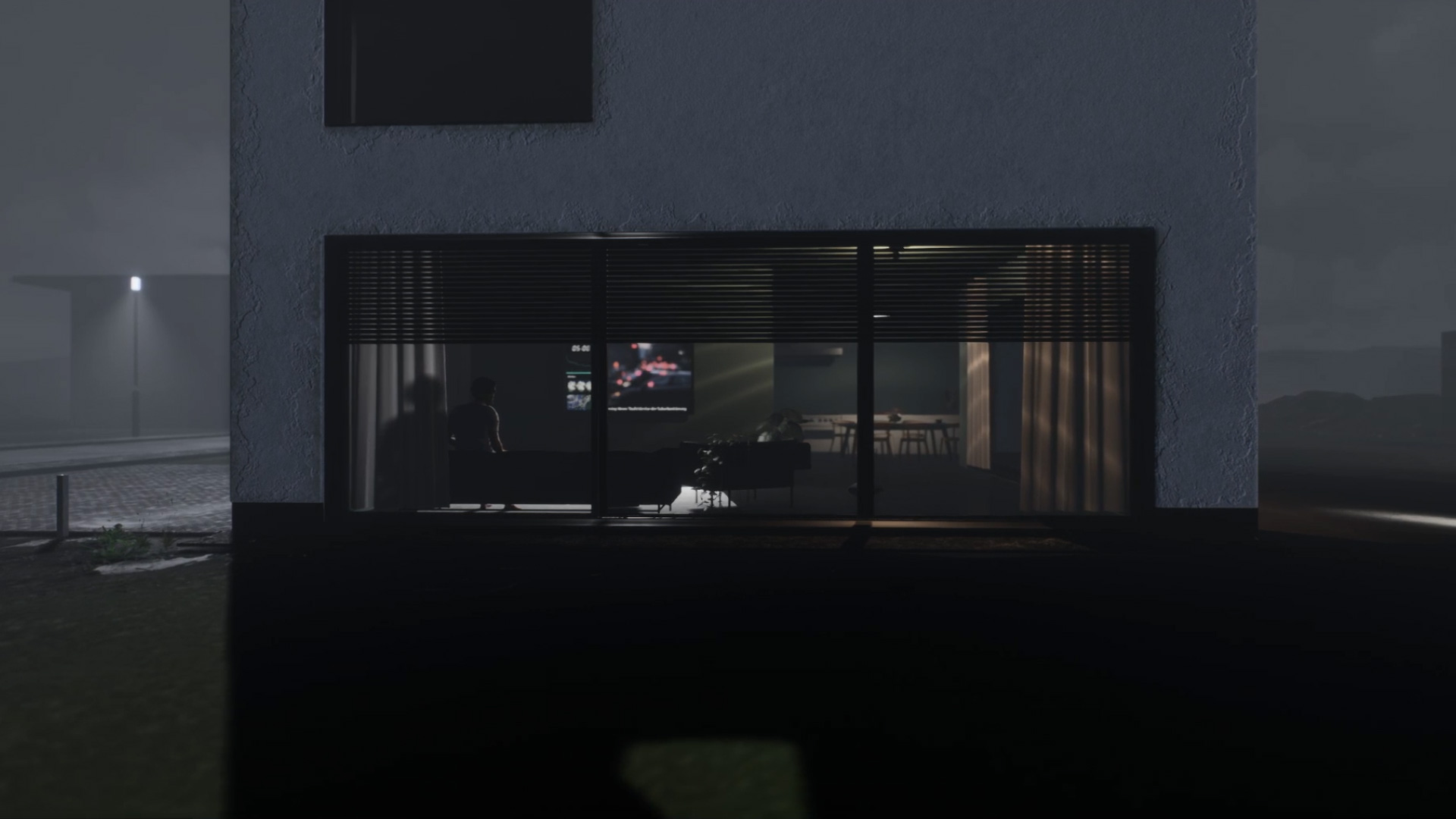
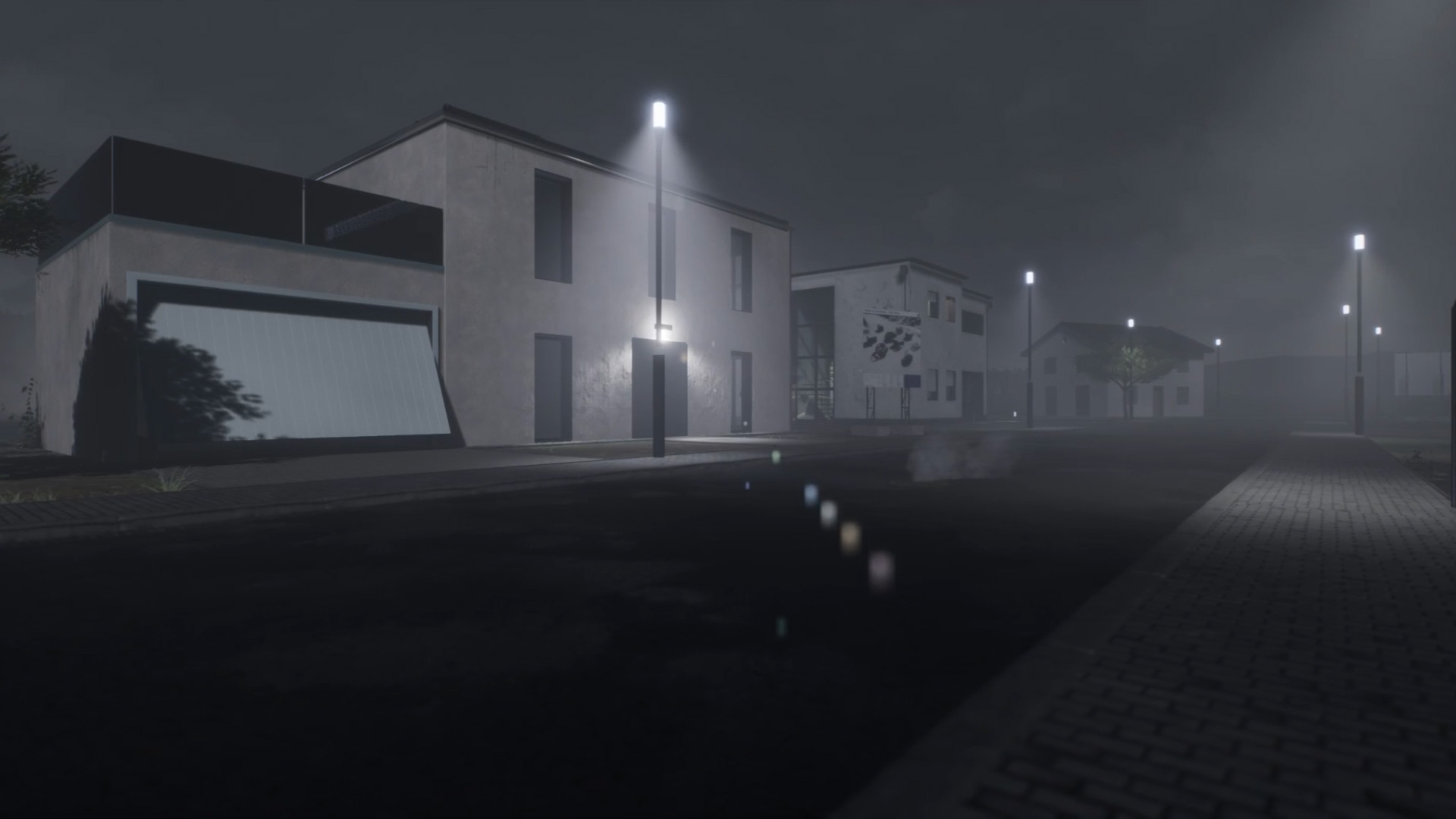
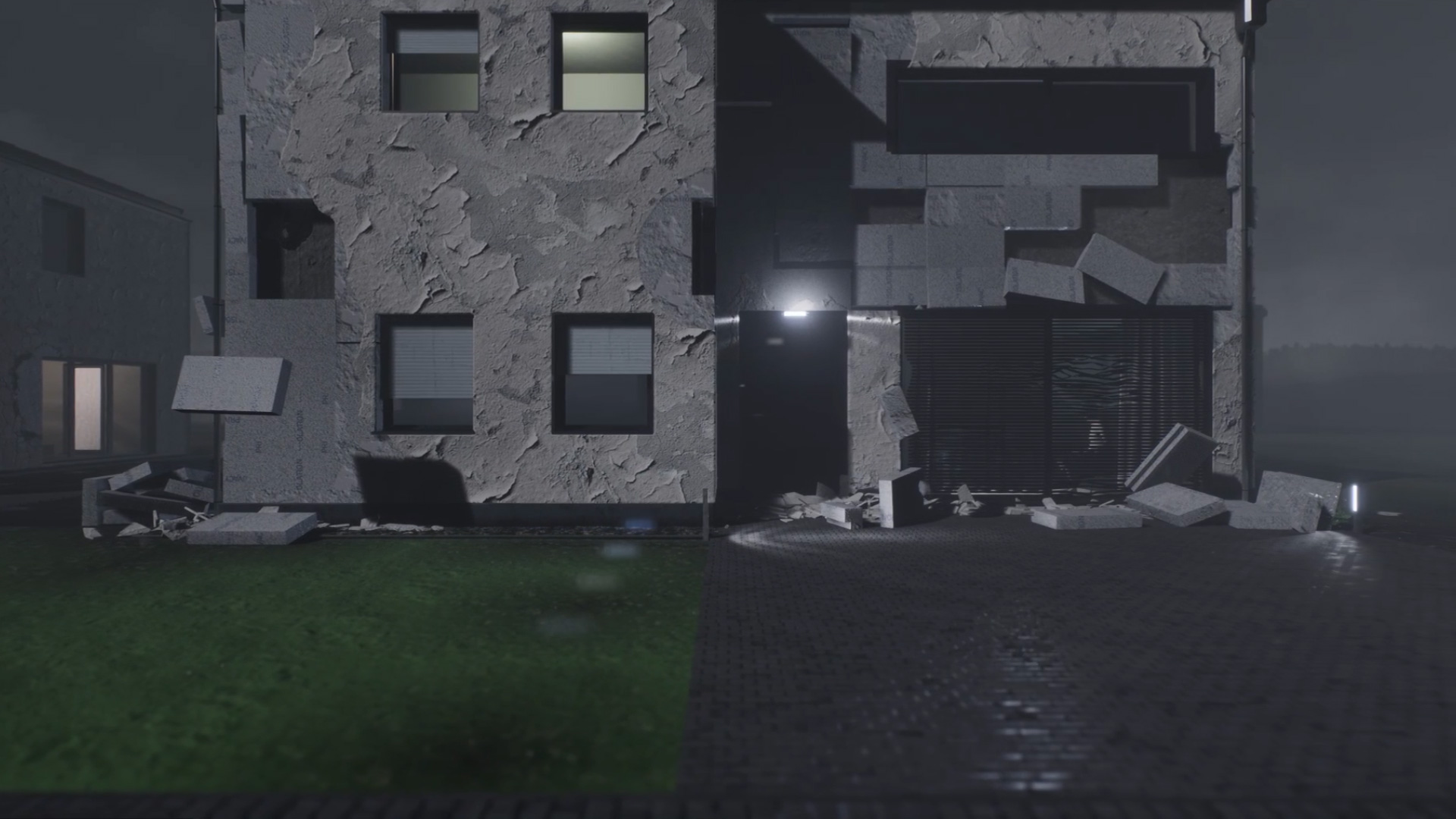
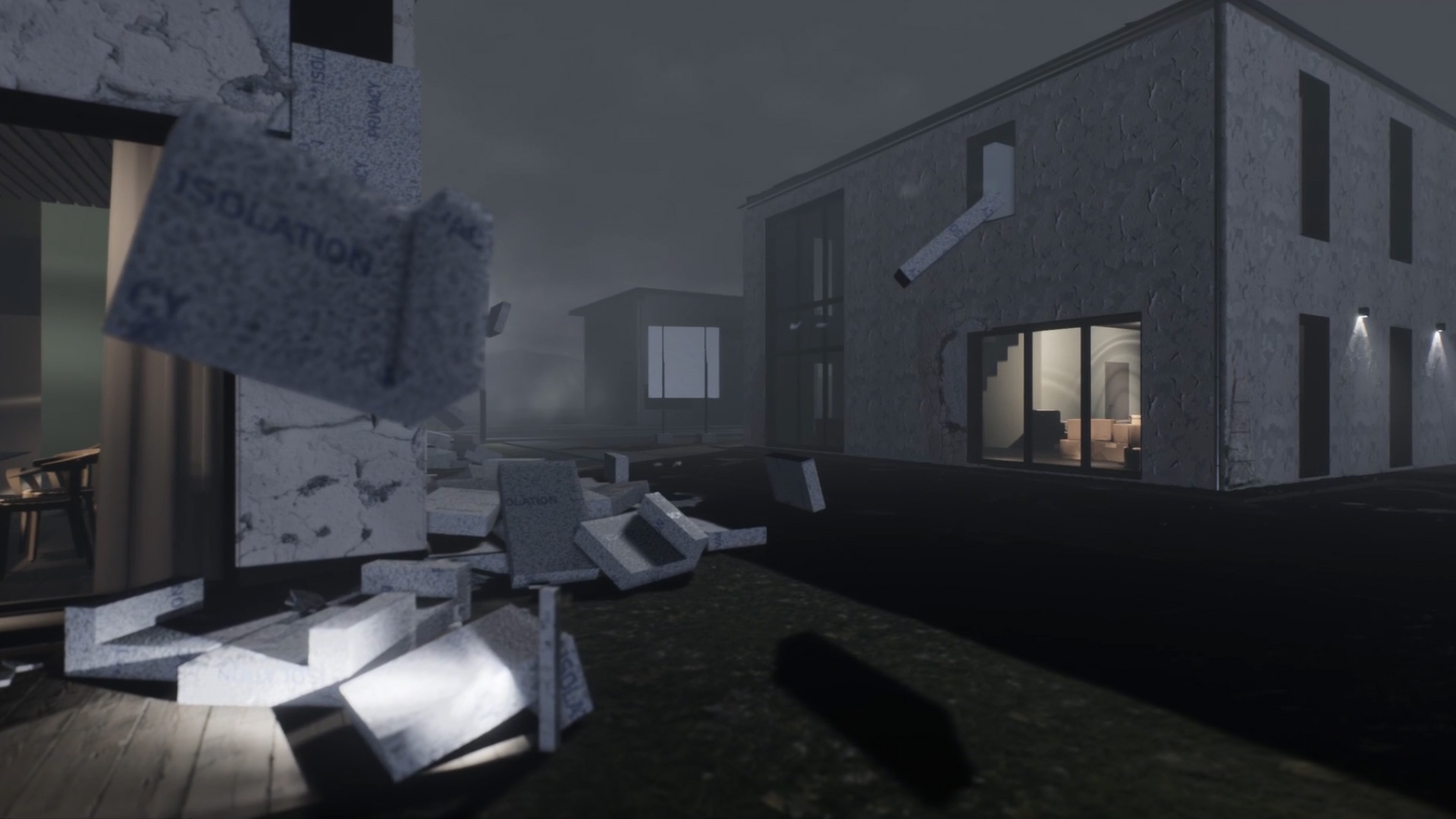
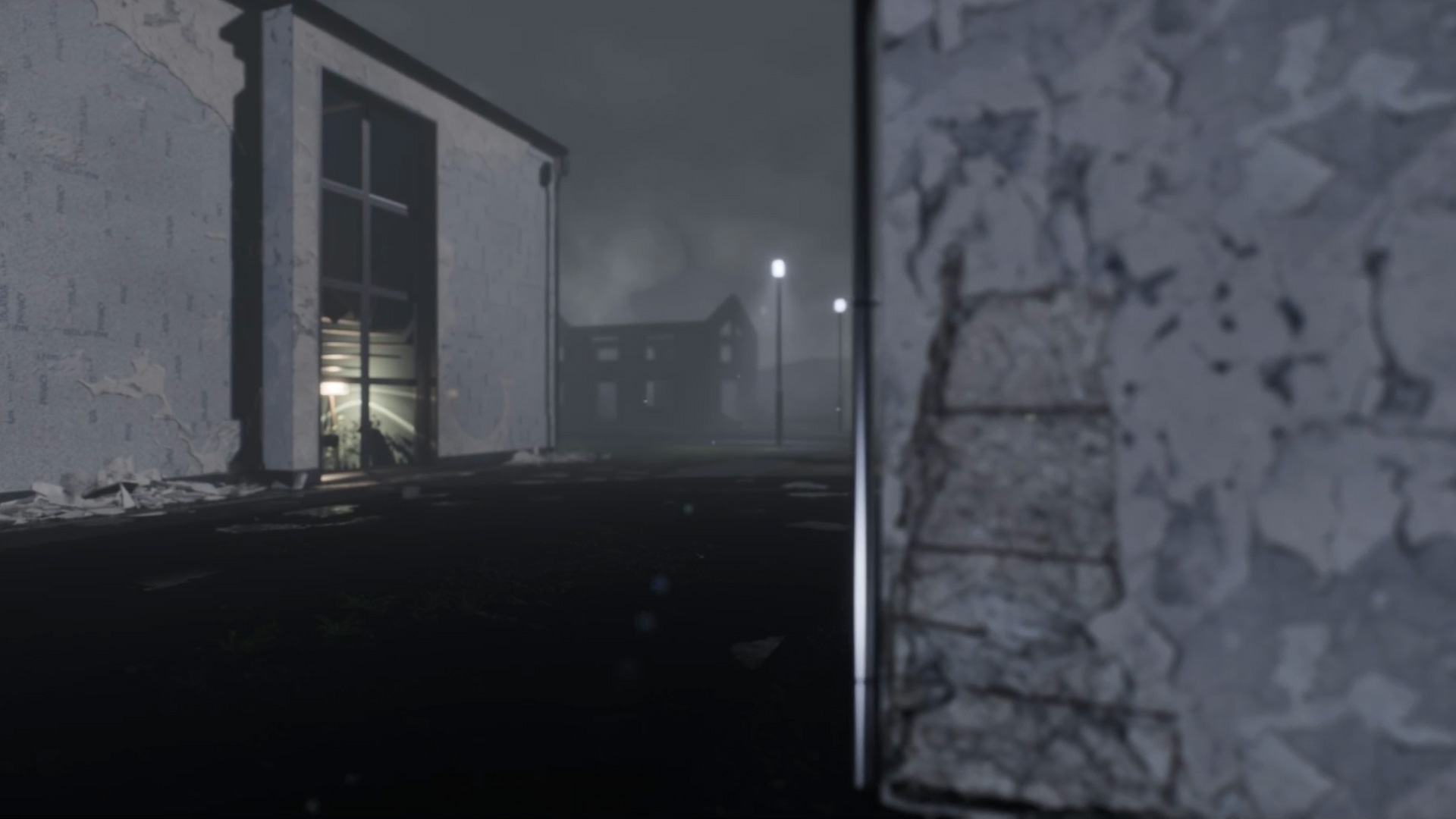
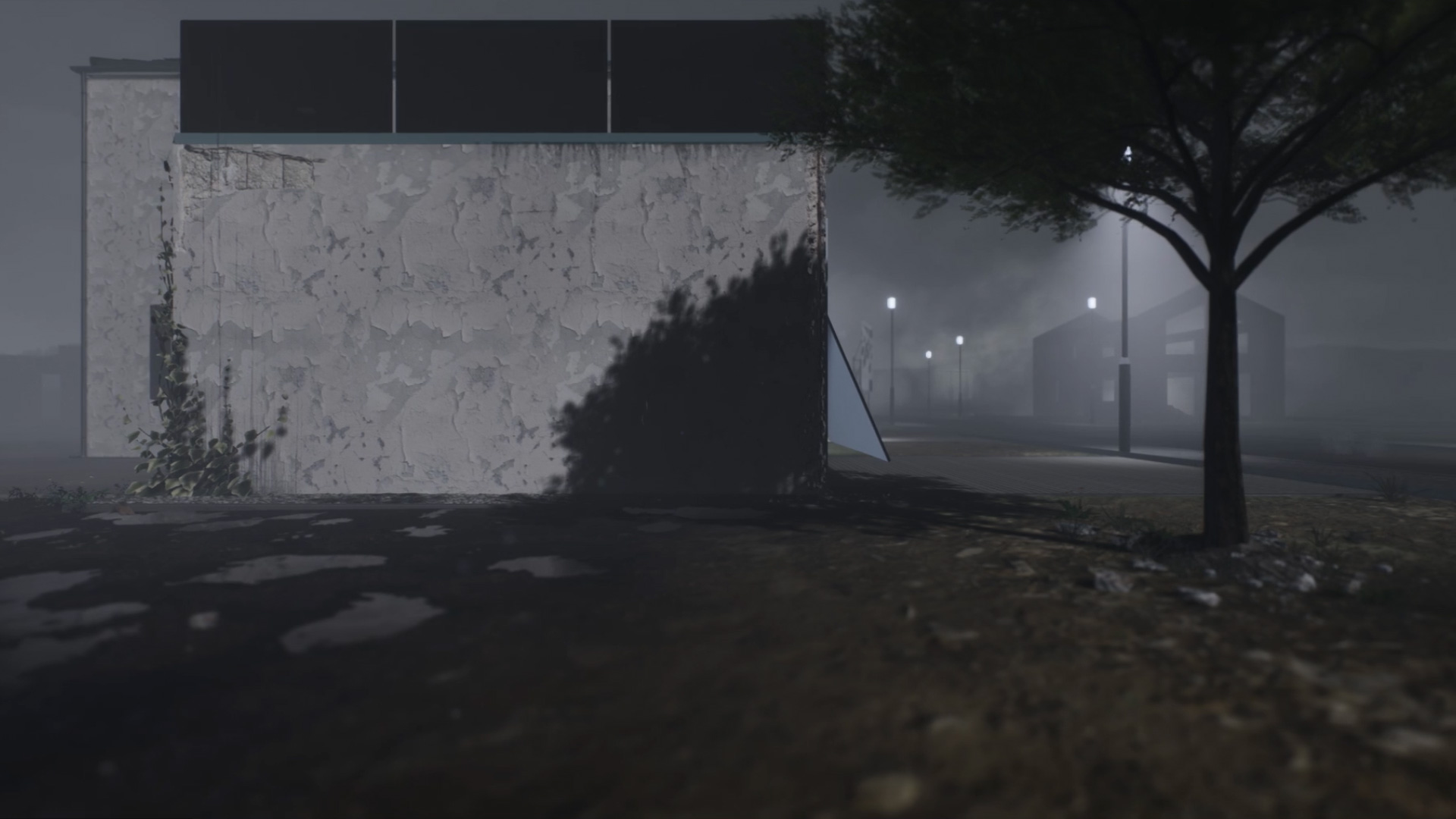
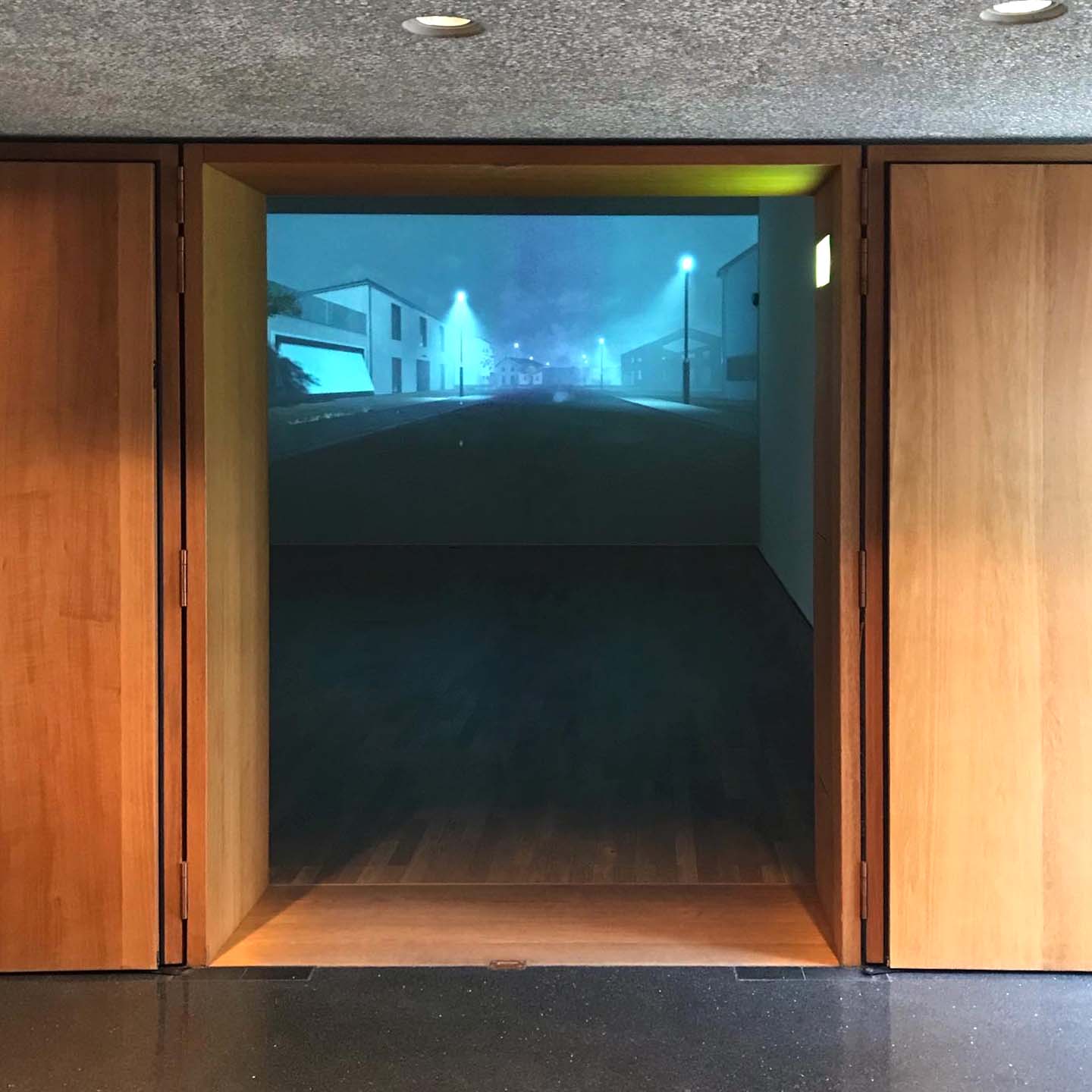
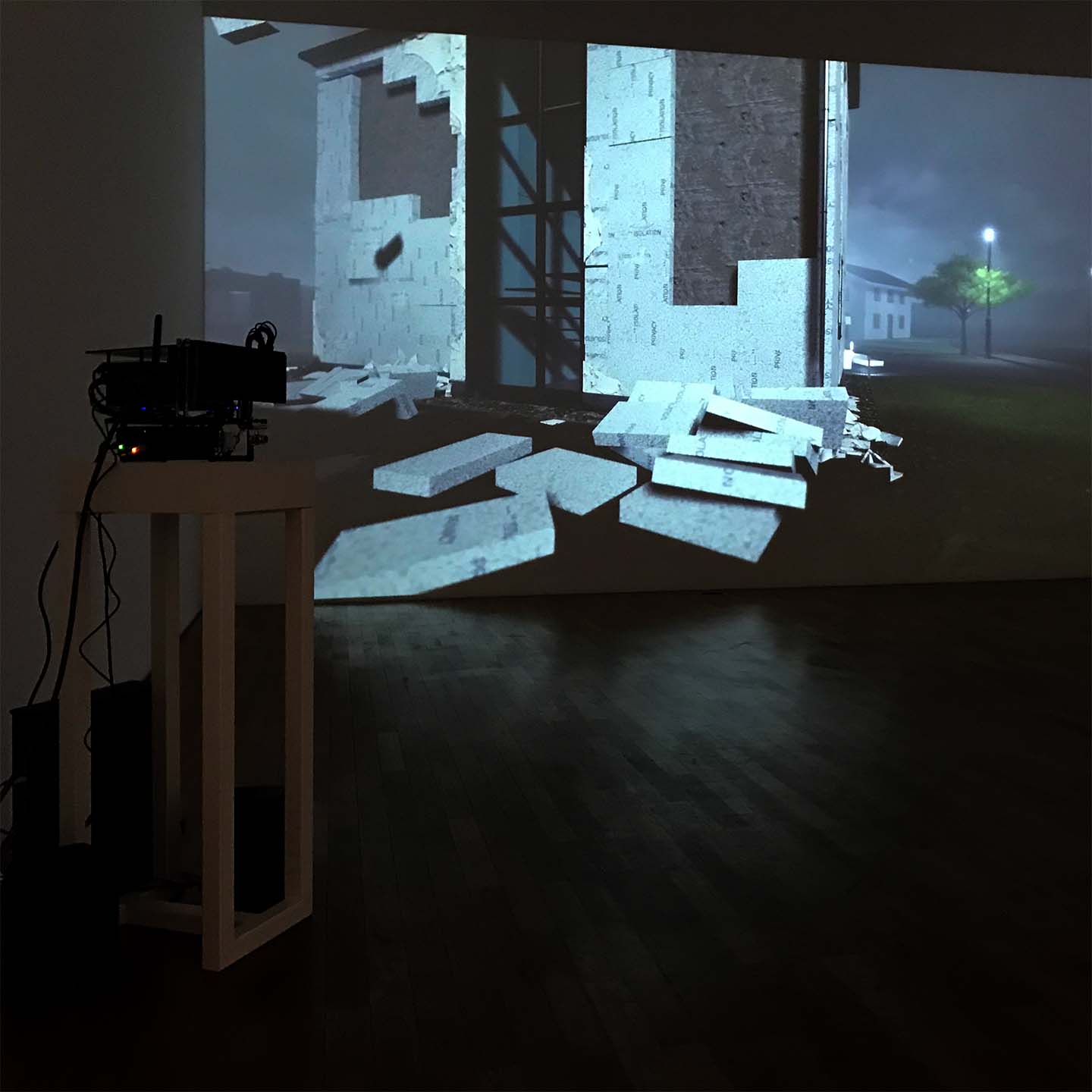
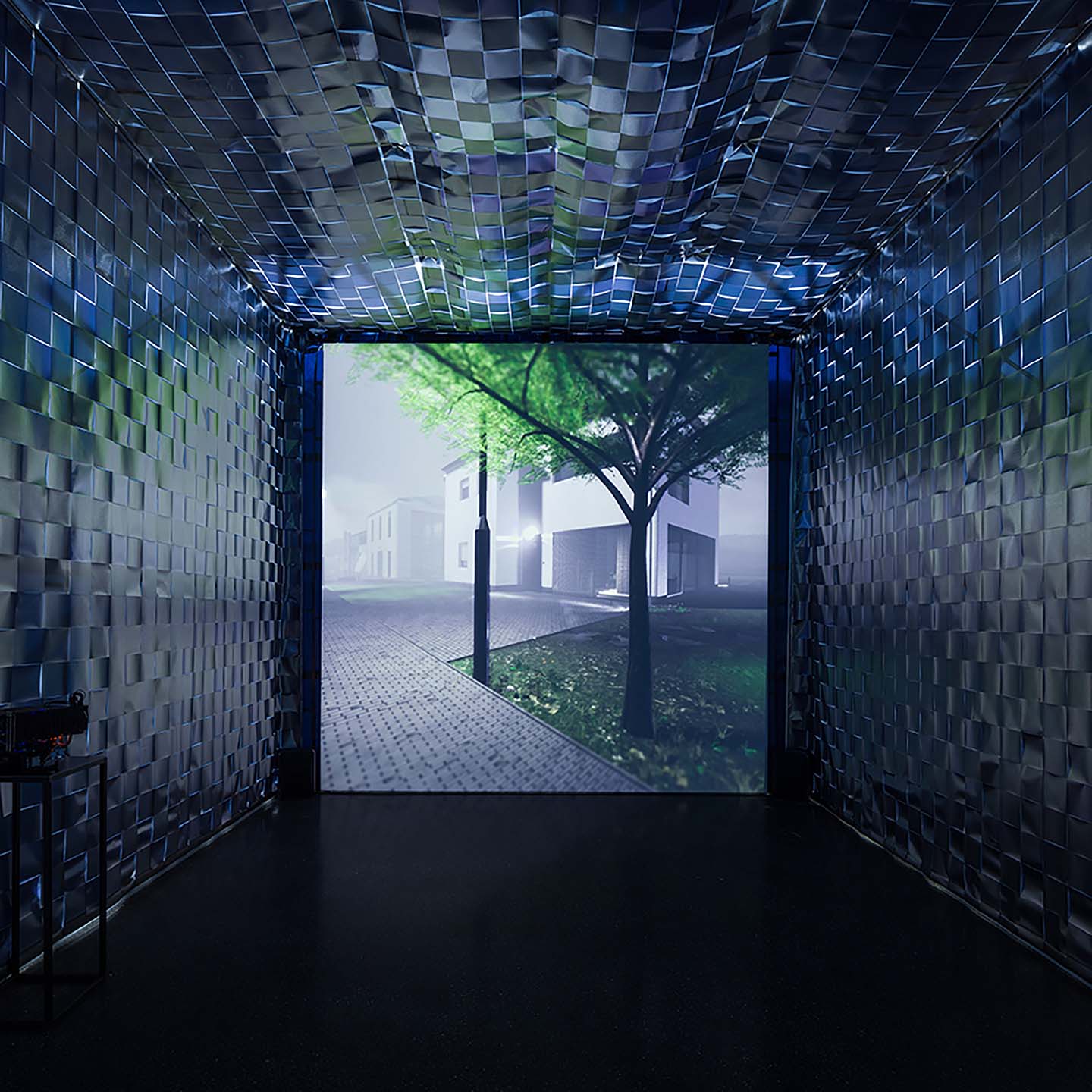
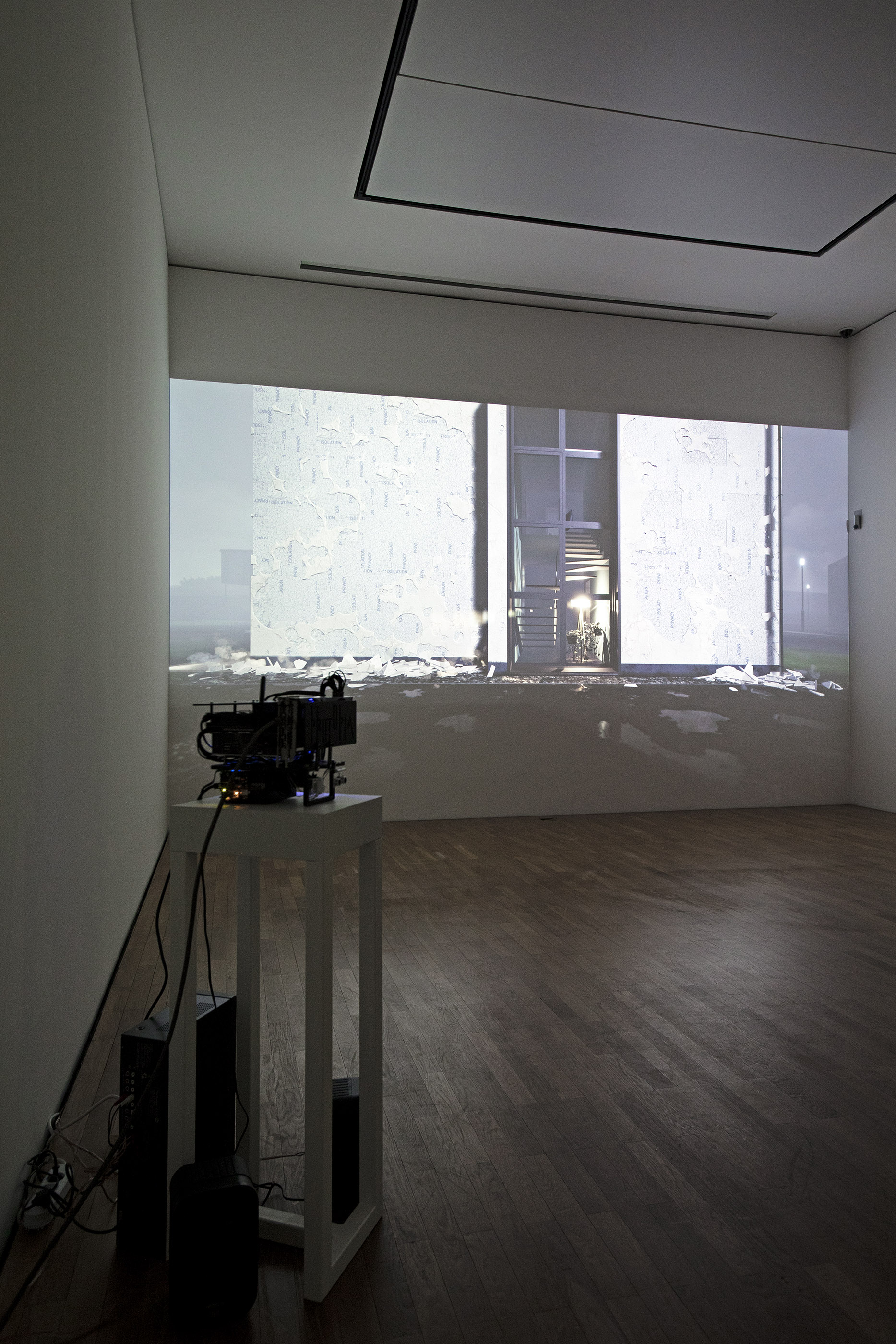
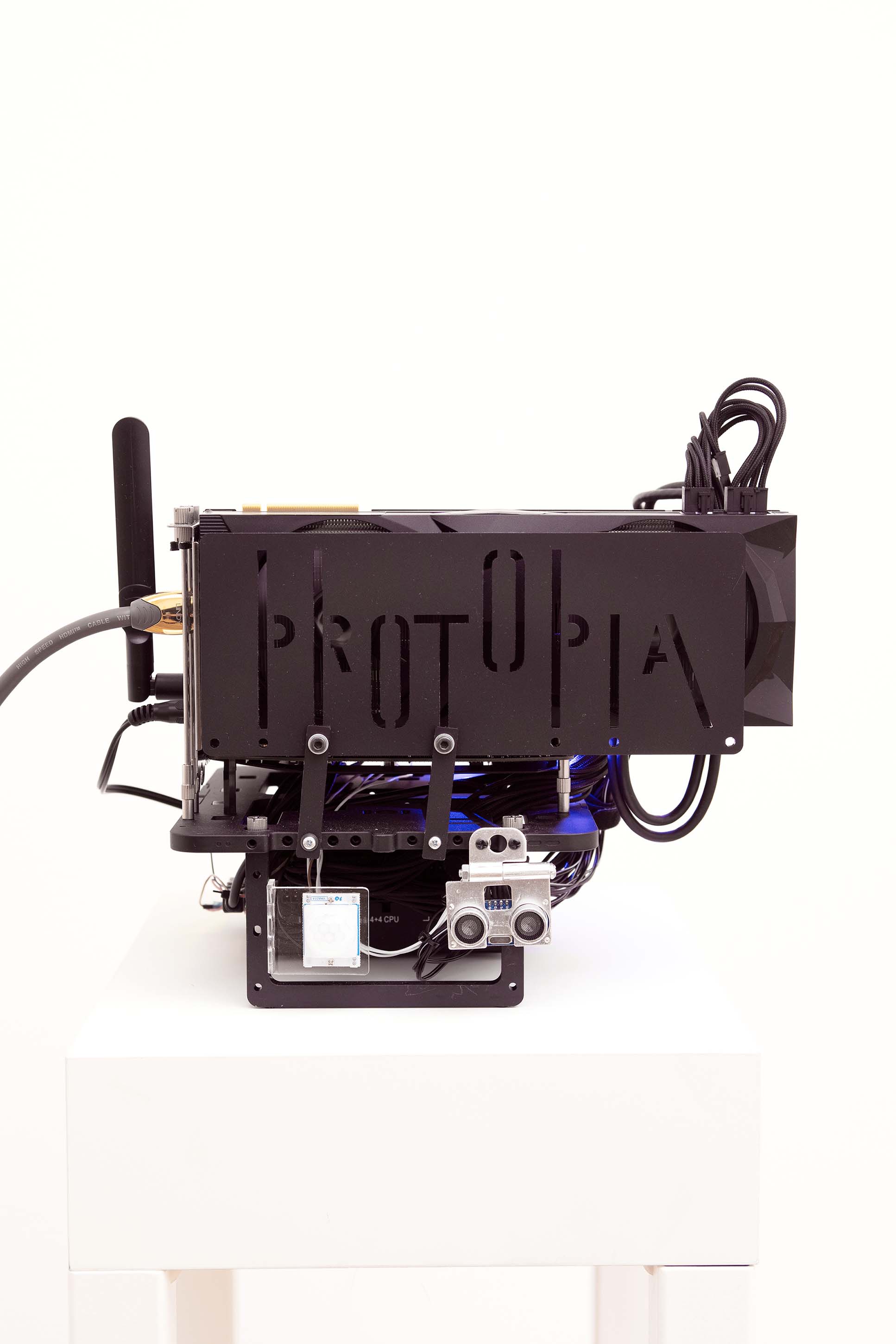
deutsch:
Protopian Dreams ist eine immersive, intermediale Installation, in der der Ausstellungsbesucher unbemerkt Einfluss auf eine Echtzeit Computer-Simulation ausübt. Ziel ist es, ein digitales Szenenbild zu erschaffen, welches sich über die Laufzeit eines Ausstellungstages dynamisch und generativ präsentiert. Das großflächig projizierte Szenenbild setzt sich aus einer fiktionalen Einfamilienhaussiedlung zusammen, bestehend aus 3D modellierten Häusern, in einer nebligen Lichtinszenierung. Drei Echtzeit Effekte Lichtintensität, Schwerkraft und Abnutzung, welche das Szenenbild durch subtile Interaktion des Betrachters verändern, sind Metapher für die Aufhebung/Entwurzelung von Ursprung, Tradition und Identität. Die wandfüllende Videoprojektion wird ergänzt durch einen angefertigten, modifizierten PC mit integrierten Sensoren. Der Abstand zwischen Betrachter und Kunstwerk wird von diesen Sensoren gemessen, ausgewertet und löst folgedessen einen visuellen Effekt in der Simulation aus: beispielsweise werden die Besucher anhand eines Bewegungs-Sensor registriert. Jeder weitere Besucher, der von diesem Sensor erfasst wird, hinterlässt eine digitale Spur, zb. durch die voranschreitende visuelle Abnutzung der 3D Modelle innerhalb der Projektion.
Zum Anderen soll die sensorgesteuerte Erfassung aller Besucher Einfluss auf die Lichtintensität und Schwerkraft einzelner Elemente innerhalb der projizierten Szene nehmen. Ein Blick durch die Fenster zeigt, wie nach und nach die Schwerkraft einzelner Möbel/Gegenstände im Inneren der Häuser außer Kraft tritt und die Objekte schwerelos im Raum miteinander agieren. Hier löst sich die Simulation von der ansonsten realitätsnahen Darstellung und eine Metapher für die Aufhebung der Privatsphäre in digitalen Smart-Homes nimmt Form an. Inspiriert ist diese Arbeit von einer omnipräsenten Suburbanisierung in hoch industrialisierten Ländern. Thematisiert wird in dieser Arbeit der Teufelskreise der Suburbanisierung, eine endlose Herausforderungen von Stadt-Umland-Problemen. Hierbei liegt der visuelle Fokus auf neu entstandenen und weiter entstehenden Neubaugebieten im Umkreis von Großstädten, sowie in innereuropäischen Grenzgebieten. Das Neubaugebiet als visuelle Metapher für eine fluktuierende Neuorientierung von Bewohnern innerhalb Europas. Eine Lebens-Alternative für Menschen, die das Leben außerhalb der Großstadt bevorzugen oder dem schwindenden Wohnraum innerhalb der Stadt entfliehen müssen. Bewohner dieser Wohnviertel sind meist sogenannte “Cross-Border-Commuter”, die auf Arbeit in der Stadt angewiesen sind, lange Berufswege in Kauf nehmen und stadtnahe Lebensqualität suchen. Der Fokus der Simulation liegt auf zwei Einfamilienhäuser. Das erste Haus ist bewohnt. In dem zweiten Haus sind Umzugskartons platziert. Im Laufe des Tages entsteht eine sich veränderte Interpretation Form. Am Morgen (Neuzustand) entsteht der Eindruck, das die Bewohner einziehen. Am Abend (abgenutzter Zustand) entsteht der Eindruck, das jemand auszieht. Dies spielt auf die Fluktuation innerhalb der Suburbanisierung an und funktioniert erst durch den beschriebenen unbemerkten Einfluss (Interaktion) der Besucher auf die Simulation. Somit ist der Mensch ausschlaggebender Faktor für eine sich verändernde Landschaft. Und dager liegt der Zusammenhang zwischen der Thematik und der subtilen Interaktion mit dem Besucher auf folgenden Faktoren: Zeit und die Anwesenheit des Menschen. Erst durch die, im Laufe des Tages, zu sehende Veränderung/Zerfall wird das protopische Bild der Suburbanisierung zugespitzt hinterfragt. Die immersive, intermediale Arbeit ist eine Annäherung an das Grundbedürfnis “Wohnen” und hinterfragt gleichzeitig eine von Kevin Kelly definierte protopische Form (jeden Tag ein wenig besser) von Leben, Privatsphäre und Identität in naher Zukunft.
english:
Protopian Dreams is an immersive installation in which the exhibition visitors are being an undetected influencer on a real-time computer simulation. The goal is to create a digital scenery that presents itself dynamically and generatively over the duration of an exhibition day. The large-scale projected scenery is composed of several 3D modeled single-family buildings staged in a foggy setting.
Three real-time effects: light intensity, gravity and deterioration, which change the scenery through a subtle interaction are a metaphor for a removal / uprooting of origin, tradition and identity. The wall-filling video projection is supplemented by a custom modified PC with integrated sensors. The distance between a viewer and the work of art is measured and evaluated. As a result this triggers a visual effect within the simulation: for example, visitors are registered by a motion sensor and every additional visitor that is detected by this sensor, leaves a digital trace, eg. the progressive visual deterioration of the 3D models within the simulation. On the other hand, the sensor-controlled detection of all visitors are influencing the light intensity and gravity of individual elements within the virtual interior. A look through the windows shows how gravity, of individual furniture, gradually ceases to exist and the objects interact weightlessly in the room. Here the simulation breaks away from the otherwise realistic representation and a metaphor for the abolition of privacy in digital smart homes is taking shape. This work is inspired by an omnipresent suburbanization in highly industrialized countries. The work focuses on the vicious circle of suburbanization, an endless challenge of urban problems. Here, the visual focus lays on new and emerging suburban areas (in German die Neubaugebiete) within the reach of large cities, as well as in inner-European border areas. The new development area is a visual metaphor for a fluctuating reorientation of residents within Europe. A living alternative for people who prefer life outside the big city or who have to escape the dwindling living space within the city. Residents of these residential areas are mostly so-called “cross-border commuters” who rely on work in the city, who have to put up with long journeys and who are looking for quality of life close to the city. Therefore, the focus of this simulation lays on two single-family houses. The first house is occupied by a young family. Only packing-crates are placed at the second house. In a course of a exhibition day, a changed interpretation form arises. In the morning (in new condition) the impression arises that new residents are moving in. In the evening (worn out condition) the impression arises that someone is moving out. This alludes to the fluctuation within suburbanization and only works through the described unnoticed influence (interaction) of the visitors to the simulation. Human beings are therefore the decisive factor for a changing landscape. And so a connection between the topic and the subtle interaction with a visitor lays on the following factors: time and the presence of man. It is only through the transformation, that the protopian image of suburbanization is sharply questioned. The immersive, intermedial work is an approximation of the basic need of “living” and at the same time is questioning a protopian form of life, privacy and identity in the near future ( Protopia "a little bit better every day" - defined by futurist Kevin Kelly).
Credits:
written, produced and programmed by Stephan Backes